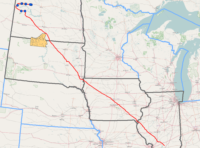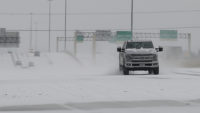The only group in the U.S. and Canada that collects and disseminates lessons from failures, errors, mishaps and safety issues is calling for reports on structural and jobsite hazards arising from the COVID-19 pandemic. The request from CROSS-US comes on the heels of the group’s first e-newsletter since the program’s launch last summer. The digital publication has five reports—each stripped of identifying marks and coupled with expert commentary.

CROSS-US, which stands for Confidential Reporting on Structural Safety-United States, aims to show the “power of learning from failures,” says Glenn Bell, an ENR Newsmaker for spearheading CROSS-US and the group’s codirector (see p. 32). “If we see unsafe trends, we expect to alert the appropriate authorities,” adds Bell, who is also 2020 president of CROSS-US’s sponsor, the Structural Engineering Institute (SEI) of the American Society of Civil Engineers (ASCE).
The goal of CROSS-US is to alert engineers so they can avoid repeating errors made by others, said Bell, at SEI’s “virtual” Structures Congress, held April 7.
The free SEI event was broadcast online to replace the annual three-day in-person event cancelled because of the pandemic. More than 600 viewers watched the CROSS session, says SEI.
As a consequence of COVID-19, CROSS-US is seeking to identify safety hazards present during lockdowns at all engineered sites, whether for buildings, bridges or other infrastructure. The goal is to aid teams preparing to restart work.
Topics include concerns about remote-work design quality for new projects, closed sites with unfinished structures and revised ongoing-work methods or changed supervision practices that could affect structural safety. CROSS-US also is seeking input on consequences of greater occupation of residential buildings during the pandemic, of vacant commercial buildings and of related curtailing of safety, inspection or maintenance activities.
CROSS-US builds on the success of CROSS-UK, the predecessor U.K.-based system formed in 2005 by Alastair Soane, who later formed CROSS-International. CROSS-US is the fourth member, following the U.K., South Africa and Australasia.
“The difference between a near miss and a catastrophe can be wafer thin,” said Soane, director of the Structural Safety Group that houses CROSS-International.
Soane’s vision is for a global dissemination network and database that also includes fire events. In the U.K., Confidential Reporting on Fire Safety (CROFS) recently launched.
CROSS-UK has published more than 900 reports, split equally between design, construction and life events. “We never criticize and we support a low-blame culture where no action is taken,” said Soane.
All CROSS databases are linked, public and free to use. Each CROSS site contains newsletters and online discussions about safety and other hazards.
The all-volunteer CROSS-US is run by an executive committee led by Bell. A 12-person panel, including engineers, lawyers, a code official and other industry experts, reviews submissions after they are stripped of identifying factors and produces all the commentaries.

All submissions are purged from the database after the “de-identified” incidents are published, said Andrew Herrmann, CROSS-US’s codirector. “We do not deal with ongoing legal cases,” he said.
During the April 7 event, Herrmann issued a request for more volunteer experts to expand the CROSS-US panel. The group is seeking building officials, contractors, government and private owners and legal and insurance professionals.
CROSS-US has received 12 usable reports. Five are in the March e-newsletter. The others will be published this summer. Ten reports involve buildings. One is about cranes and another is about a suspended-scaffold anchoring system. Seven involve failures. Two are about construction quality. Two involve incidents and/or safety concerns and one is an ethical dilemma regarding structural safety.
Roof Collapse
In the e-newsletter, the first case is about a roof collapse during an earthquake in California. The second involves two tower crane collapses during dismantling in 2019—one in the U.K. and one in the U.S. The third report is about an unfolding concern over the use of standoff brackets for C-shaped cornice hooks for the support of suspended scaffolding.
The fourth report involves a building collapse caused by inappropriate stockpiling of construction debris during a reroofing operation. The fifth is a look at a legacy failure—the catastrophic roof collapse of the Hartford Coliseum in 1978.
“Concerns over computer software and modeling errors raised by this case are very much relevant today,” says CROSS-US in the report.
Cliff Schwinger, vice president for quality at the Harman Group, agrees: “Overreliance on analysis and design software can be deadly. Inattention to details can be deadly. While software is a good tool, it is not a substitute for experience.”
Regarding CROSS-US, “the more information engineers have regarding past structural failures, the more educated the profession will be,” says Schwinger. “The greater the awareness of the many ways structural failures can occur, the more diligent the profession will be in preventing such failures.”
Toward that end, on April 27, CROSS-US, which has more than 331 subscribers, plans to share the news of its e-publication with the 30,000-plus members of SEI and with all other ASCE entities.






Post a comment to this article
Report Abusive Comment